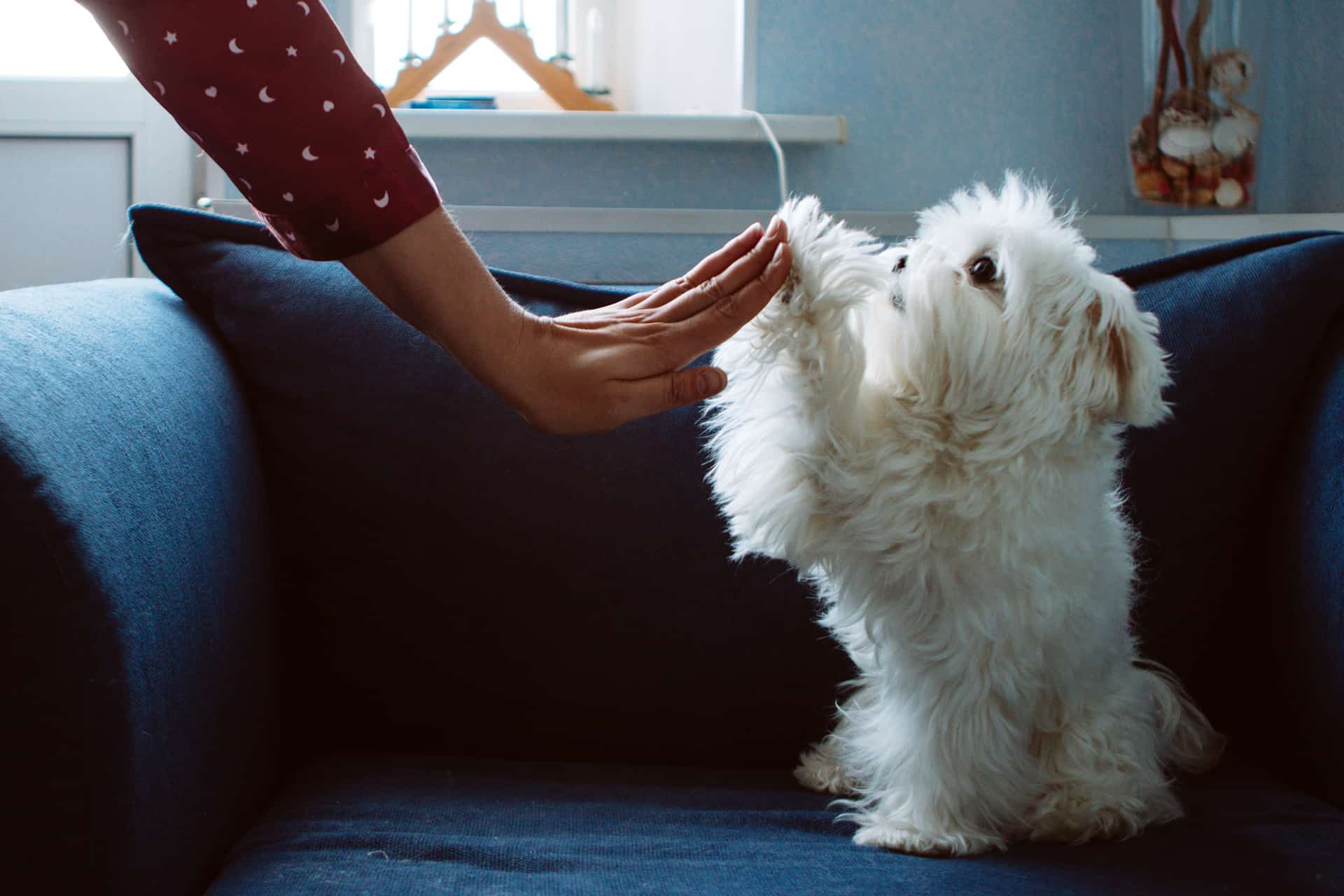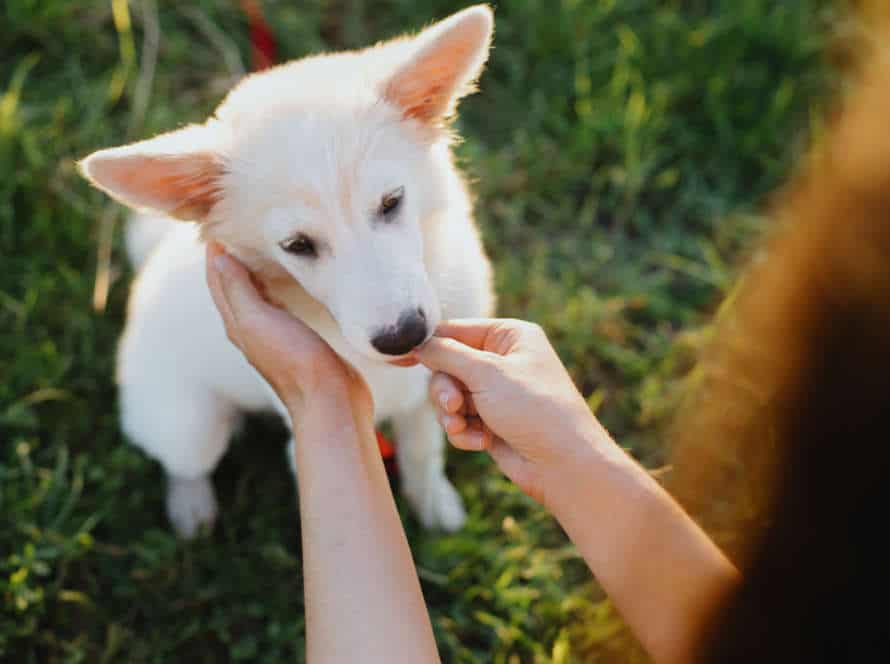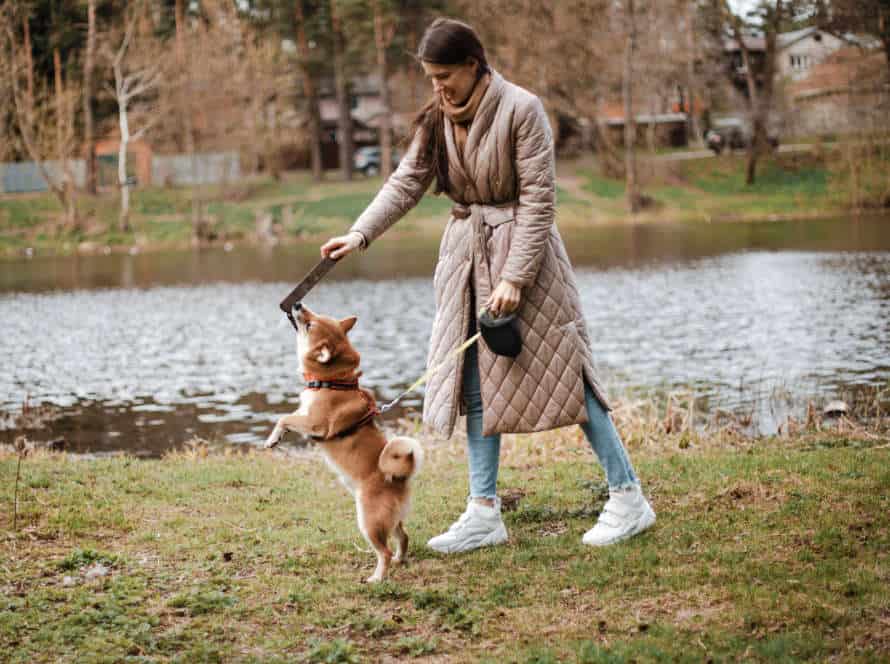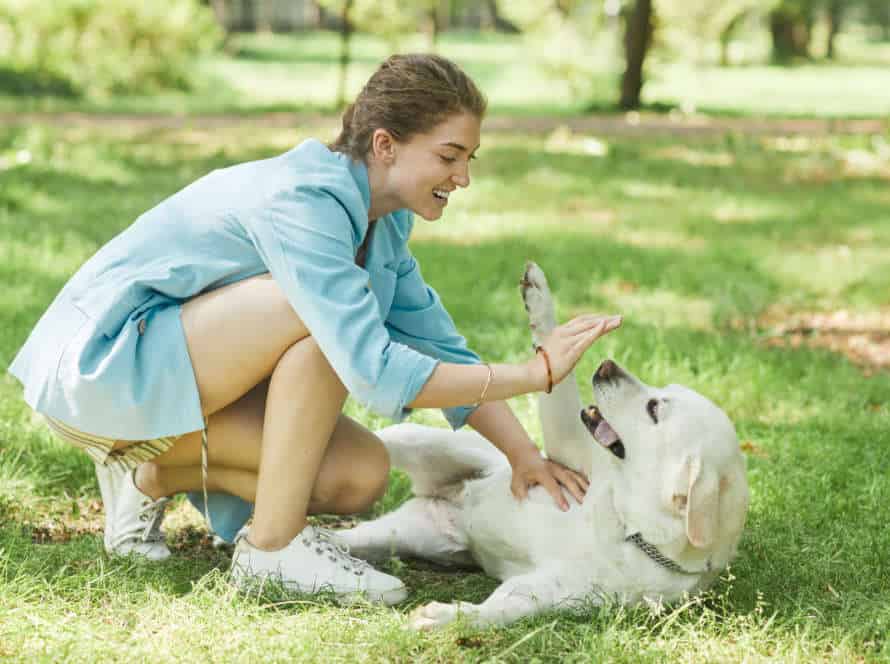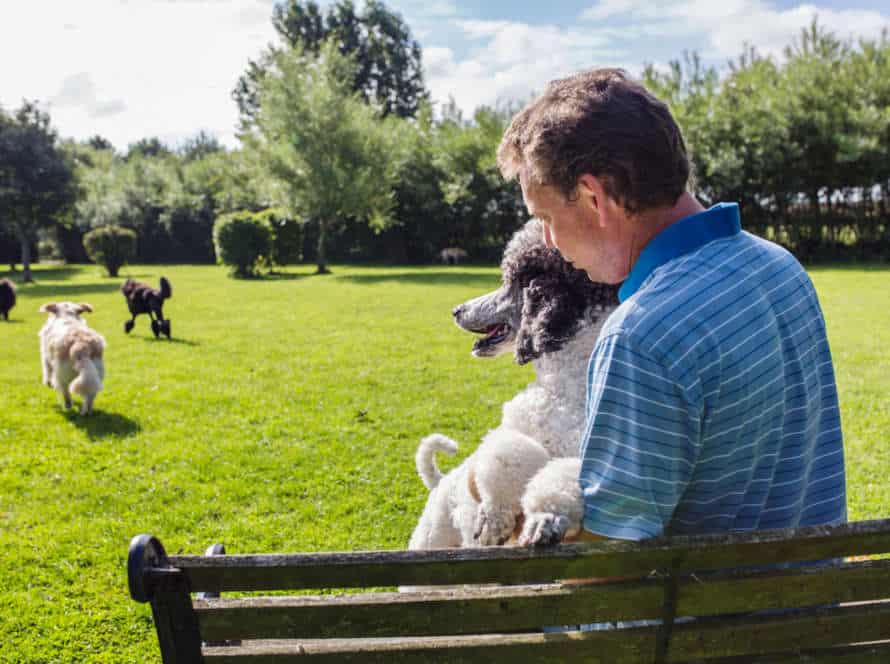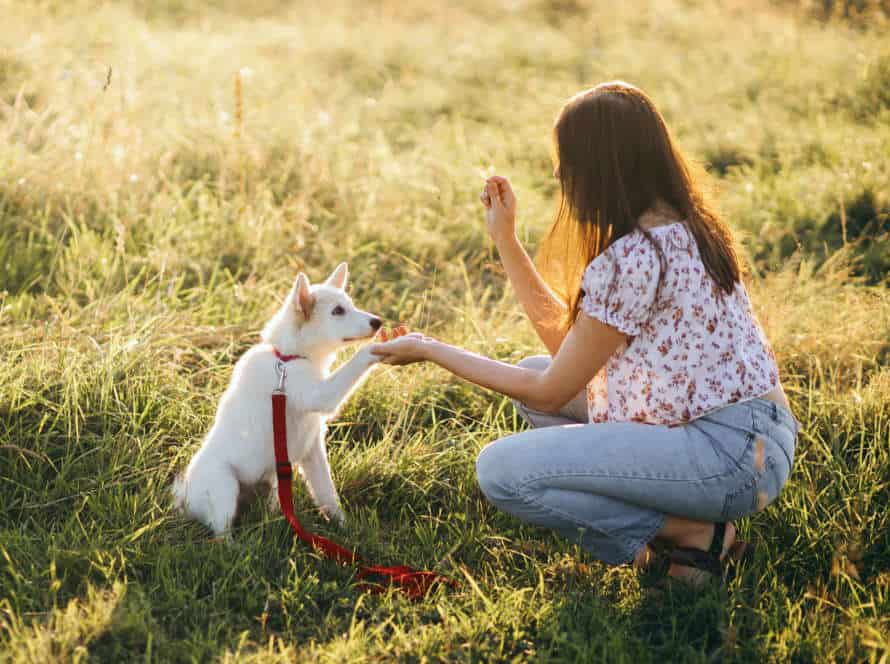Adapting Trick Training for Adult Dogs with Special Needs
Adapting trick training for adult dogs with special needs needs special attention. Here are some strategies:
- Simplify the trick. Break it down into small, doable steps. Reward each step with positive reinforcement.
- Use aids and props. Harnesses, body wraps, balance beams, and platforms can give additional support to the dog during the training.
- Modify the environment. Minimize distractions and make it comfortable and safe for the dog. Reward the dog for focusing.
- Be patient and persistent. Work at the dog’s speed and adapt and modify the training techniques if needed. Celebrate the successes, no matter how small.
Pro Tip: Consult a vet or professional trainer before trick training a dog with special needs.
Understanding Special Needs in Adult dogs
When training adult dogs with special needs, balance is key. These pooches have different needs than regular dogs, so it’s key to understand them. Medical factors, behaviors, and environmental concerns must be considered. Let’s see how these impact trick training for adult dogs with special needs.
Identify if your dog has a special need
As pet owners, it’s essential to understand if our dogs have specific requirements. We must give them appropriate care and adjust training techniques to their abilities. To identify special needs in your pooch, observe their behavior and talk to a vet. Here are some signs:
- Trouble walking, running or climbing stairs
- Chronic or repeating health issues
- Unexpected changes in attitude or temperament
- Hearing or sight impairment
- Anxiety or stress-related behaviors
After you detect special needs in your doggo, modify your training plans to fit their abilities. For example, trick training can help engage their mind while accommodating their individual needs.
Pro Tip: Before starting any training program for your pup, especially with special needs, consult your veterinarian.
Understanding the behavior of dogs with special needs
Caring for a pup with special needs requires patience, knowing, and changes to the training approach. Here are some top tips to help you better comprehend their behavior and adjust to their one-of-a-kind requisites in trick training.
- Become informed about your pup’s exact situation and its symptoms.
- Put together a cozy and safe atmosphere that caters to your pup’s physical boundaries.
- Use positive support techniques such as snacks, acknowledgement, and toys to urge your pup during training.
- Divide tricks into smaller, possible steps to keep away from overwhelm and confusion.
- Establish realistic goals and objectives for your pup in line with their abilities and limitations.
- Avoid physical strain and laborious tasks that could damage your pup’s health.
By following these steps, you can assist your pup with special needs lead a satisfying and joyful life through trick training.
Pro Tip: Always consult with a vet or dog behaviorist to make a tailored training plan for your pup’s particular needs.
Basic training tips to reinforce positive behavior
To help train adult dogs with special needs, try these tips:
- Break the trick into parts and reward good behavior each step.
- Offer high-value treats as motivation.
- Keep sessions brief and consistent.
- Use verbal cues and hand signals to communicate.
- Congratulate successes to keep dog motivated.
Plus, recognize any physical or mental challenges your dog has. Adapt training methods to make sure it’s a positive experience.
Trick Training for Adult Dogs with Special Needs
Trick training is great for adult dogs with special needs. It boosts physical activity, mental stimulation and socialisation. Plus, it’s a positive reinforcement tool to help with better behaviour. So, how do you use it?
Here’s the scoop on trick training for adult dogs with special needs.
Choosing tricks based on special needs and abilities
When it comes to training adult dogs with special needs, it’s essential to pick tricks that suit their abilities and restrictions. Here are some tips to modify trick training for adult dogs with special needs:
- For dogs with physical boundaries, pick tricks that don’t require much movement, e.g. “shake,” “sit,” and “stay.”
- For dogs with hearing issues, use visual prompts such as hand motions or flashing lights to indicate when it’s time for the trick.
- For dogs with vision issues or who are blind, rely on verbal cues and smells to direct them through the trick.
- For dogs with cognitive problems, focus on tricks that rely on skills they already have and be patient with their progress.
By adjusting trick training to your dog’s special requirements and capabilities, you can help them build confidence, strengthen the bond with you, and enjoy themselves.
Step-by-step instructions for training dogs with special needs
Training dogs with special needs requires patience, understanding and a unique approach. Here are the steps to adapt trick training for adult dogs with special needs:
- Identify your dog’s special needs. Such as hearing or vision impairment; mobility issues or learning disabilities.
- Choose a trick that is safe and easy for your pup. Taking their special needs into account.
- Split the trick into small, possible steps. Rewarding your dog for each successful try.
- Use positive reinforcement methods like treats, praise, and clicker training to motivate your dog and create an upbeat learning atmosphere.
- Repeat each step until your pup has mastered it before progressing to the next.
- If your dog gets frustrated or overwhelmed, take a break and come back later.
- Be patient, consistent, and flexible when training a dog with special needs.
Using rewards and positive reinforcements to train dogs with special needs
Training canines with special needs can be a difficulty. But, rewards and positive reinforcement can make it more pleasurable and successful. Here’s some advice for customizing trick teaching for adult pups with special needs:
- Start with basic orders and stunts like ‘sit‘ and ‘stay‘, and steadily proceed to more intricate tricks as the dog progresses in assurance and comfort.
- Use treats of high value like tiny pieces of cheese or chicken to motivate the pup and endorse beneficial behaviour.
- Remain patient and kind, and prevent increasing your voice or using strength to rectify your dog’s behaviour. Positive reinforcement is the most effective type of training for pooches with special needs.
With frequent instruction and positive reinforcement, dogs with special needs can learn fresh stunts and behaviours, improve their assurance and social skills, and live contented and fulfilling lives.
Tips for Successful Trick Training for Adult Dogs with Special Needs
Tricks can be a joyous, beneficial activity for adult pooches with unique requirements. With a few changes and tweaks, doggos of all ages and capacities can learn and have fun with trick training. This article will give advice on how to successfully teach tricks to adult dogs with special needs and outline the straightforward steps that make it easier for your pup.
Patience, Consistency, and Persistence is Key
Trick training for adult dogs with special needs? Patience, consistency and persistence are key! Here’s some tips:
- Start Slow: Begin with something easy and increase difficulty bit by bit.
- Positive Reinforcement: Praise, treats and toys will encourage learning.
- Adapt Tricks: Make the trick fit your dog’s physical and cognitive level. For example, if mobility is limited, teach them to shake their head instead of paw.
- Consistency: Practice at the same time, in the same spot, every day.
- Patience: All dogs learn differently. So, be patient, don’t get frustrated.
- Persistence: Even if your dog struggles, don’t give up. With practice, they’ll master new tricks.
Reading and Responding to Your Dog’s Body Language
Understanding your pup’s body language is essential for successful teaching of tricks, especially for older dogs with special needs. Here are some tips to help you modify your trick training for your pup’s abilities:
- Notice your pup’s body language: Look out for their ears, tail, and posture. Are they happy or worried? Are they comfortable with the teaching?
- Use positive reinforcement: Give treats or compliments to your pup when they make progress or complete a trick. This will strengthen good behavior and motivate your pup to keep learning.
- Change the training to your pup’s abilities: If they have physical or mental issues, modify the trick training. Consider using visuals or aromas instead of verbal commands.
- Be calm and steady: Teaching tricks requires time and hard work, particularly for dogs with special needs. Remain patient, remain positive, and keep practicing regularly.
Knowing When To Stop and Take Breaks
When teaching adult dogs with special needs, it’s essential to know when to quit and take pauses. This helps the training go well and stops the dog from feeling overwhelmed. Here are some tips to help you decide when to stop and rest:
- Pay attention to your pup’s body language. If they appear anxious or uncomfortable, then stop the training.
- Keep the practice sessions to 10-15 minutes, especially if your pup has attention or energy difficulties.
- Break the session into shorter parts, with regular breaks to give your dog time to recover.
- Don’t get mad and force your dog to keep training. Instead, finish the session with a treat and lots of compliments.
If you recognize when to end and have pauses, your adult dog with special needs will have a fun and successful training.
Advanced Trick Training for Adult Dogs with Special Needs
Trick training is a fantastic way to keep your adult pooch occupied and stimulated. It may be especially important for those with special needs, as it can be an outlet for their energy and offer mental stimulation. But, it can be difficult to modify traditional training methods for special needs dogs. Here, we will talk about techniques and approaches for advanced trick training of adult dogs with special needs.
Training with agility equipment
Agility equipment can be great for trick training and exercise for adult dogs with special needs. It is essential to choose the right equipment and prioritize safety. Training should be done in short sessions, taking into account the dog’s age and health. It is also important to provide the dog with a healthy diet for energy and overall wellbeing.
In the end, advanced trick training with agility equipment is beneficial. However, it is vital to consider the dog’s capabilities before beginning the training in order to ensure positive outcomes.
The importance of free-shaping tricks with special needs dogs
Free-shaping tricks are a must for training adult dogs with special needs. This technique encourages the dog’s behaviour via positive reinforcement, rather than direct commands or physical correction. This method helps build confidence and independence in these dogs.
Here are some tips for using free-shaping tricks on dogs with special needs:
- Begin with easy behaviours and gradually increase difficulty.
- Reward the dog with treats or other positive reinforcement to explore new behaviours.
- Break down complex behaviours into simple, achievable steps.
- Be patient and give the dog time to learn and master new behaviours.
Remember – free-shaping is a non-confrontational approach that builds trust and understanding between you and your furry friend.
Finding a community of special needs dog owners and trainers to share tips and progress.
Training a special needs pooch? Get yourself a support system! Connect with other owners and trainers for tips, progress updates and achievements. Here’s how:
- Look for breed-specific or special needs dog groups online.
- Social media groups focusing on special needs dogs could be good.
- Attend classes or events for special needs dogs.
- Ask your vet or shelter for recommendations.
Safety first! Step back and appreciate even the smallest progress. And don’t forget to use the help around you. Reach out for advice – there are plenty of resources available for special needs pet owners and trainers.
Frequently Asked Questions
Q: Can I teach trick training to my adult dog with special needs?
A: Yes, trick training can be adapted to dogs with a range of special needs. With patience, creativity, and the guidance of a professional trainer or veterinarian, many dogs can participate in trick training and benefit from the mental stimulation and positive reinforcement it provides.
Q: What are some special needs that may make trick training more challenging?
A: Dogs with mobility issues, hearing or vision impairments, behavioral challenges, or medical conditions may require additional adaptations and accommodations for trick training. It is important to consult with a veterinarian or trainer who has experience working with special needs dogs to determine the best approach.
Q: Can trick training help improve my special needs dog’s quality of life?
A: Yes, trick training can provide mental stimulation, physical exercise, and opportunities to bond with their owners. It can also help build confidence and trust, reduce stress and anxiety, and support overall well-being for special needs dogs.
Q: What types of tricks can I teach my special needs dog?
A: The types of tricks that are appropriate for a special needs dog will depend on their individual abilities and limitations. Some tricks that may be adaptable include targeting, shaping, positioning, and scent work. Trainers may also incorporate props or equipment to help dogs with mobility or sensory issues.
Q: What should I keep in mind when training my special needs dog?
A: Patience, consistency, and positive reinforcement are key when working with any dog, but especially with those who have special needs. It’s important to start with basic obedience cues and build up to more complex tricks gradually. Reward-based training methods can help build trust and prevent any negative associations with the training process.
Q: Where can I find resources for training my special needs dog?
A: Consult with your veterinarian or a professional trainer who has experience working with special needs dogs. There are also many online resources available, including blogs, forums, and social media groups dedicated to special needs dog training and behavior modification.

